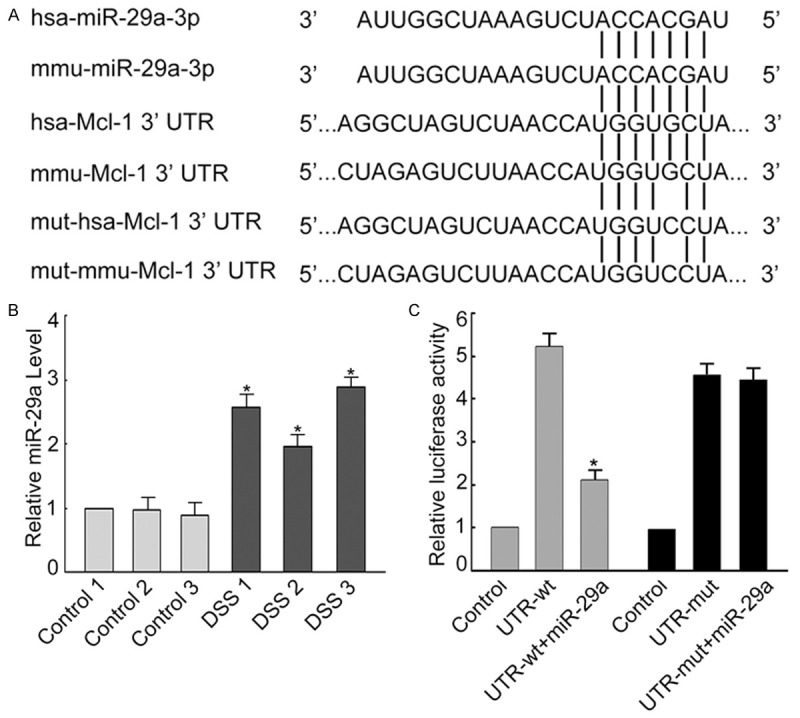Figure 4.

Up-regulated miR-29a in DSS-induced mice experimental colitis regulates Mcl-1. (A) Predicted duplex formation between human and mouse mcl-1 3’UTR (has-Mcl-1 3’UTR and mmu-Mcl-1 3’UTR, respectively) and human and mouse miR-29a (has-miR-29a-3p and mmu-miR-29a-3p, respectively). Vertical lines represent complementary matches between miR-29a and mcl-1 3’UTR. Point mutation (5th G -> C) on the binding site of human and mouse mcl-1 with miR-29a was introduced. Mutants (mut-has-Mcl-1 3’UTR and mut-mmu-Mcl-1 3’UTR) were transfected into colonic epithelial HT29 cells and the luciferase activity of reporter genes were measured and compared with negative control and positive control (UTR-wt). (B) The miR-29a level in mice with DSS-induced experimental colitis was significantly higher than in control animals. *P < 0.05 vs. control 1 (C). In colonic epithelial HT29 cells, mutation on the 3’UTR miR-29a binding site of mcl-1 caused significant up-regulation of the expression of reporter gene. When HT29 cells were co-transfected with 3’UTR binding site mutants of mcl-1 and miR-29a plasmid, the luciferase activity of reporter genes increased significantly. Data are expressed as the means ± SD (n = 3). *P < 0.05 vs. control.
